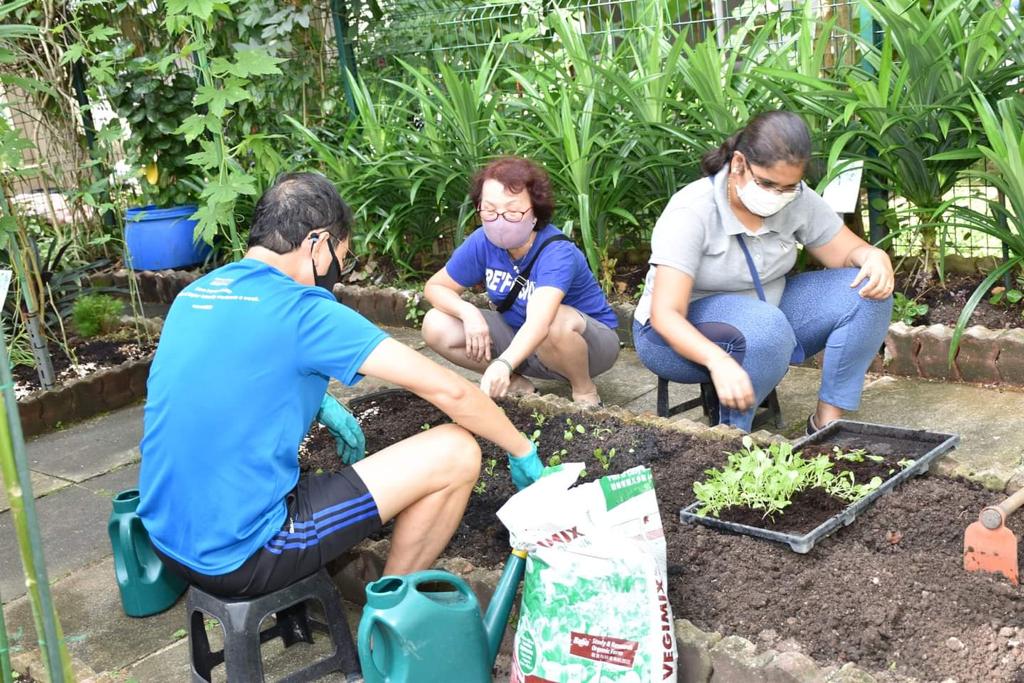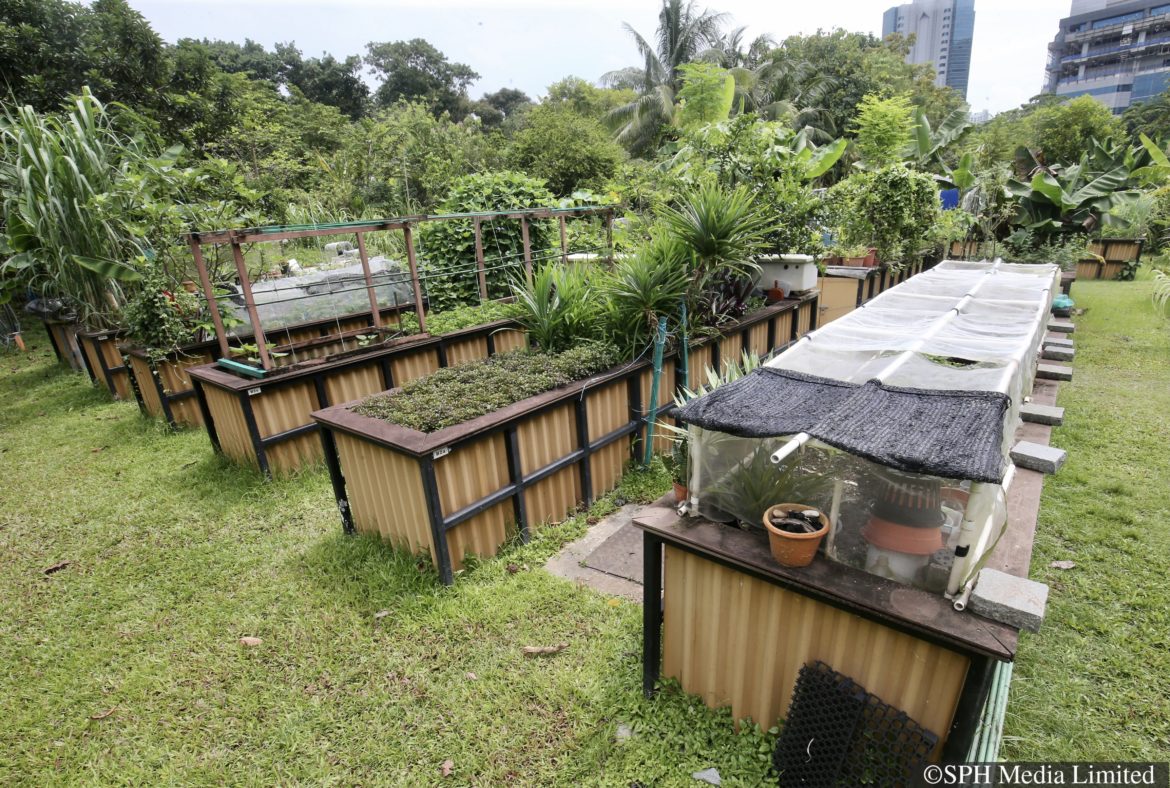Community gardens are increasingly becoming popular in Singapore as they provide a relaxing space away from the hustle and bustle. In Singapore’s urbanised environment, these gardens bring a much-needed sense of joy and fulfilment, especially to residents who are passionate about gardening. Importantly, community gardens allow residents to share common interests and form long-lasting bonds.
With Singapore’s vision to transform the island into City in Nature, NPB aims to increase the number of community gardens islandwide to 3,000.
Being a shared space, however, it’s important to be mindful of the good practices that make community gardens an enjoyable space for everyone. Here is a guideline for gardening etiquette for residents who wish to pursue this hobby.
- Keep passageways clear of pots, plant debris and gardening tools to reduce the risk of people tripping and falling. Also, ensure that hanging planters, pots, trellises and other structures do not protrude out of the plot.
- It’s a good practice to not pick other people’s crops without permission, even if you only intend to pick out the weeds. This can lead to unwanted disputes.
- Keep your gardening activities tidy and ensure the pathways are clear of spilt soil or mulch. When using communal tools, wash, clean and return them to their proper storage space. In case of any damaged tool that might cause injury, it’s good to inform fellow gardeners about it as they might use the tool after you.
- Before you start your community garden sessions, acquaint yourself with the rules that existing gardeners might have already put in place. For example, the garden might have the policy to use only certain kinds of soil and fertilisers that are chemical-free. It’s best to adhere to any such practice laid down by the collective.
- Be aware of your movements and navigate carefully, lest you trample on any empty spot that might have germinating seeds or underground bulbs that are not immediately visible.
- Consider your crops carefully and the sunlight they will require, to ensure that your crops don’t prevent others’ crops from receiving sunlight.
- Avoid planting thorny plants, as the sharp thorns can cut and poke holes in our skin, causing injury to other gardeners and visitors.

Here are a few useful tips to ensure the healthy growth of your plants and create a pleasant environment
- Those who want to experiment with aquaponics farming will need to know the types of nutrients and pH value plants require, says Mr Koh Boon Chye, 70, from Yuhua. “For instance, xiao bai cai requires 1.4 to 1.6 micro siemens of nutrients and it requires a pH of 5.5 to 6.5,” he adds. Gardening enthusiasts can purchase a nutrient measuring metre online. Mr Koh also shares that aquaponics farming requires a water temperature of 32 deg C. “If the water temperature is too high, the plant will absorb fewer nutrients.”
- Ensure your edibles can derive sufficient nutrients by providing them with a suitable soil mix. To create the right blend, combine one part loamy soil with one part grit.
- Make it a habit to remove weeds and plants that are either dead or inflicted with the disease. Rampant weeds steal water and valuable nutrients from the soil that other healthy plants need.
- Do loosen hardened soil to help the plant grow better. Hard soil prevents the plant roots from growing, and it also prevents water from penetrating the plants.
- To reduce potential mosquito breeding spots, conduct a regular check for stagnant water that might collect at the base of plant stems, among leaf litter, or inside trellis poles.
- Avoid plants such as bromeliads, cocoyams and pitcher plants that tend to collect water, as this could lead to mosquito breeding.
- Consider the amount of sunlight and watering required when choosing what to plant in the garden. For example, leafy vegetables such as caixin and kang kong need a minimum of four to six hours of direct sunlight a day and daily watering. They usually require more maintenance and are thus more suitable for gardeners who can come to the plot daily.
- Fruiting vegetables such as brinjal need four to six hours of direct sunlight a day and regular fertilising. On the other hand, most herbs and spices require at least four hours of filtered sunlight with regular fertilising.
Corridor gardening
As most Singaporeans live in high-rise buildings, growing edible greens and other plants in the common corridor has been gaining ground in recent years.
But starting corridor gardening will require the use of proper containers and a selection of suitable plants. As common corridors are communal spaces, it is also important to adopt good gardening etiquette so that the owners and their neighbours can enjoy the corridor plants.
- To avoid obstructing the neighbours, Bukit Batok resident and community gardener Mr Richard Ashworth, 68, shares that it’s best to avoid placing potted plants in the corridor. Instead, he suggests using a planter box or balcony flower rack that is raised above the floor and can be purchased online or from a local nursery.
- Planters and racks should be safely secured using brackets on the inner side of the parapet walls. No items should be placed on the parapet walls, hung from the ceiling or hung outside the building. This is to avoid killer litter accidents.
- As most vegetables require a lot of sunlight exposure, Mr Ashworth also advises residents to observe the amount of sunlight that comes into the corridor daily. Direct sunlight will cast a dark and defined shadow, while filtered sunlight will cast a fuzzier shadow. The corridor should receive at least four to six hours of direct sunlight to grow edible greens. “At certain times of the year when there’s not much sunlight, you may have to plant a variety that can thrive without ample sunlight,” he adds.
- Plants need good air circulation, so do space out the plants. In addition, good air circulation promotes water evaporation. It also prevents condensation on the leaf surfaces, which further helps to reduce rotting and the growth of fungal infections.
- Avoid planting thorny or spiky plants to reduce the likelihood of causing injury to yourself or people walking along the corridor.
- Ensure that hanging planters, pots, racks and other structures do not protrude into the main throughway.
- Remove water in the planter dishes daily to prevent mosquito breeding.
- While watering the plants, do ensure that water is not gathering or making the corridor wet as it could result in slippery and dirty floors.

